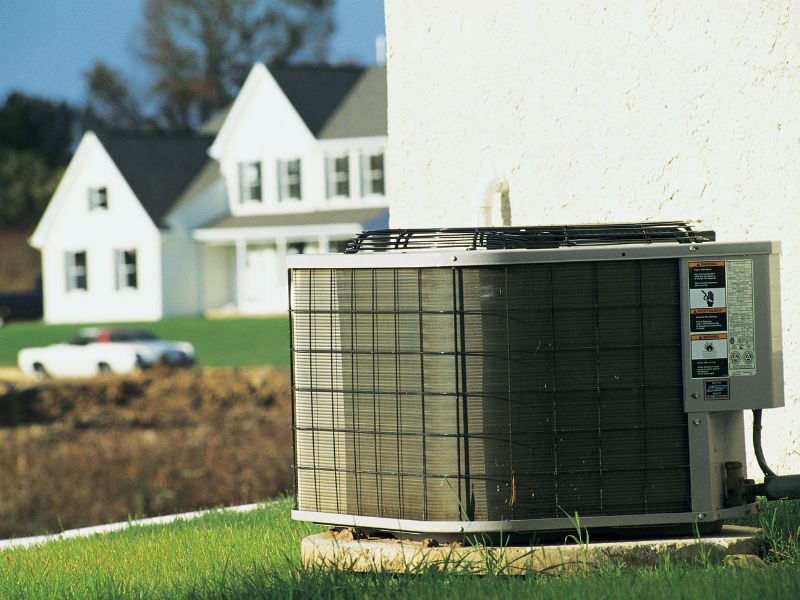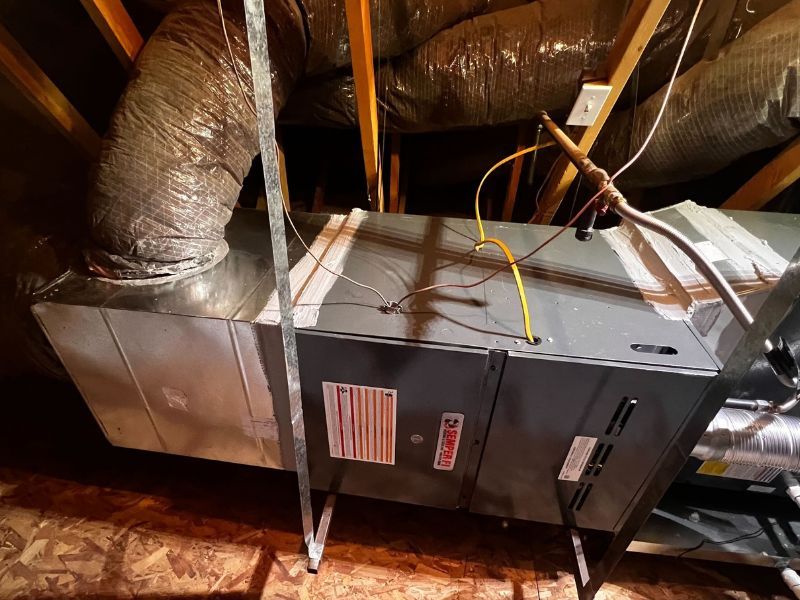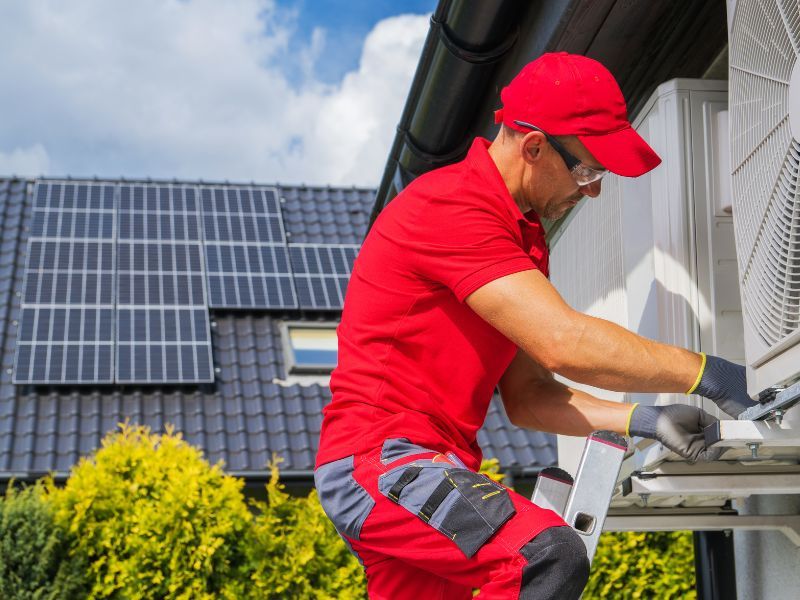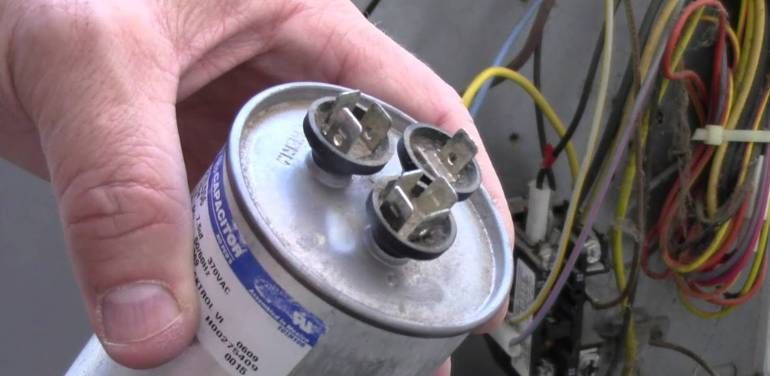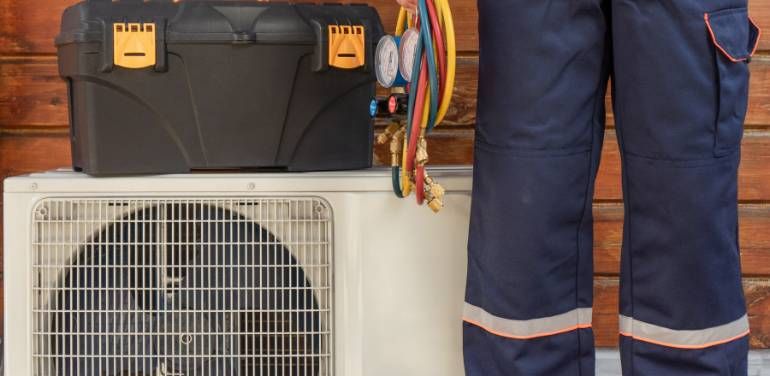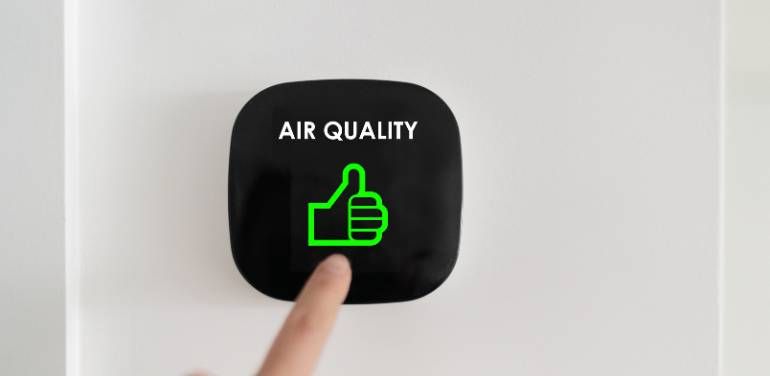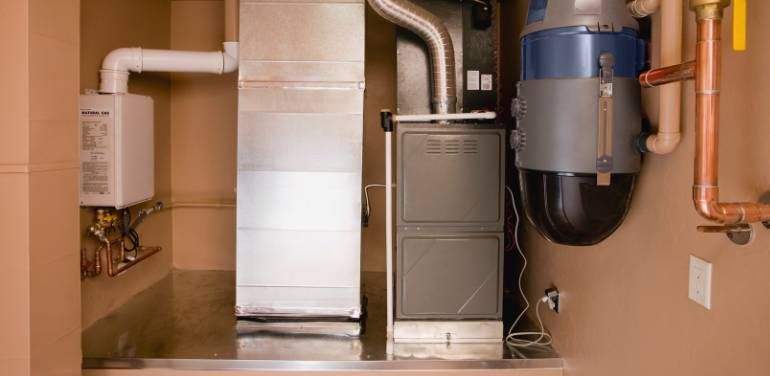How Much Does It Cost To Install a New Furnace in 2024?
Have you ever wondered just how much a single decision, like installing a new furnace, could transform not only your home but also your finances? As I sat contemplating the upcoming chill of 2024, the prospect of warmth came with a price tag as varied as the colors of autumn leaves. From the hum of energy-efficient models to the whisper of installation complexities, each factor seemed to weave its own narrative. But what truly caught my attention was the hidden intricacies of regional pricing and labor fees. Let’s explore the tangled web of costs and discover the unexpected…
Factors Affecting Furnace Costs
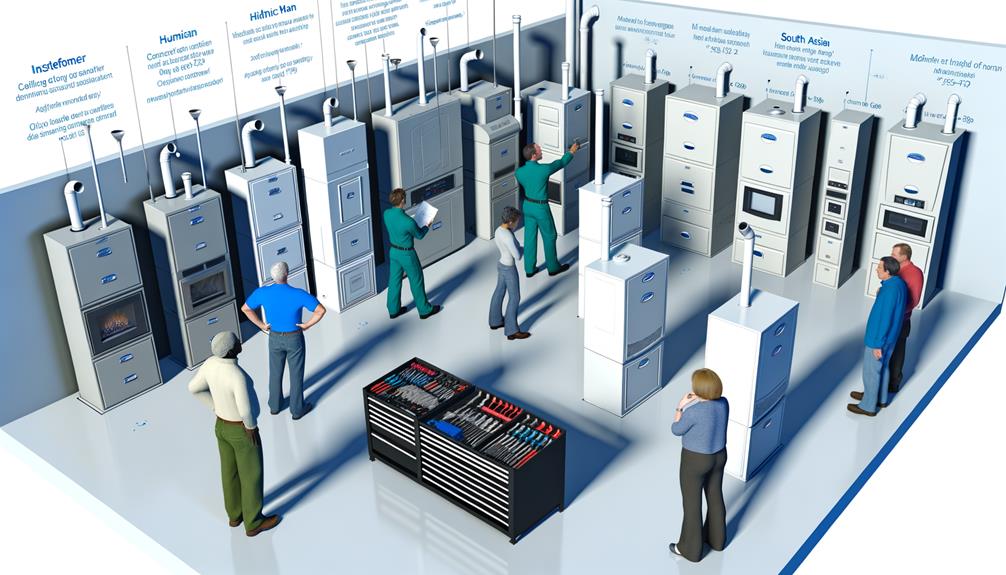
When you’re planning to install a new furnace, several key factors greatly influence the overall cost. As I initiated my journey to replace my old, wheezing furnace, I quickly discovered that the installation price wasn’t just a simple figure. Instead, it was a complex tapestry woven from the threads of various considerations.
First, I found that the size of the furnace is essential. My house, with its sprawling rooms and high ceilings, demanded a larger unit. This meant higher costs compared to a compact model for a cozy bungalow.
The efficiency rating of the furnace also played a significant role. I realized that while a high-efficiency furnace had a steeper initial price, the long-term savings in energy bills were undeniable.
Another aspect that caught me by surprise was the installation complexity. My home’s existing ductwork needed some reconfiguration, which added to the labor costs. If your current setup is straightforward, you might save some bucks, but in my case, it wasn’t as simple as plugging in a new appliance.
Moreover, I couldn’t ignore the regional differences in pricing. Living in an area with harsh winters meant higher demand for furnaces, nudging the prices upward compared to milder climates. This is something you should consider based on your location.
Lastly, I learned that the brand and warranty options could shift the cost scale. Investing in a reliable brand with a solid warranty gave me peace of mind, knowing I wouldn’t face unexpected expenses down the road.
Each decision I made was a step towards achieving mastery over my home’s heating system.
Types of Furnaces Available
Understanding the factors that influence furnace costs led me to investigate the various types of furnaces available. Each type offers unique features and benefits, and selecting the right one can feel like an intriguing puzzle.
As I probed deeper, I discovered that the most common types are gas, electric, oil, and propane furnaces.
Imagine the robust gas furnace, a favorite for its powerful heating capabilities and cost-effectiveness. It’s like having a stalwart guardian against winter’s chill, running on natural gas to warm your home efficiently.
However, it requires a gas line, and not all homes are equipped for that.
Then there’s the electric furnace, a marvel of simplicity and convenience. It doesn’t demand much maintenance and can be installed almost anywhere.
Picture it as the reliable friend who’s always there, even if the electricity bills can be a bit higher.
Oil furnaces, on the other hand, evoke a sense of nostalgia. They’re akin to an old family heirloom — dependable and familiar, especially in regions where natural gas isn’t available.
They do require regular maintenance, though, and oil prices can fluctuate.
Lastly, propane furnaces offer a flexible option, especially in rural areas. They’re like the adaptable problem-solver in your circle, providing efficient heating where other fuels are scarce.
However, propane must be stored on-site, requiring careful planning for refueling.
Each furnace type has its own story, and understanding these nuances can help you make an informed decision, ensuring your home remains a cozy haven throughout winter’s reign.
Energy Efficiency Considerations
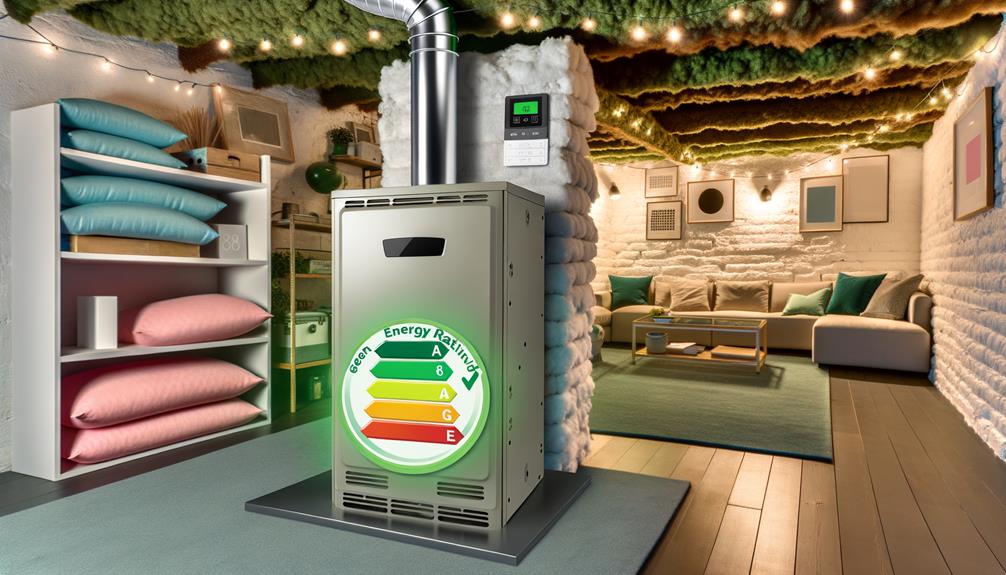
Energy efficiency is the secret ingredient that can transform your home’s heating system from a simple necessity into a savvy investment.
Picture yourself on a frosty winter morning, wrapped in a warm blanket with a steaming cup of coffee. Now imagine that you’re not only enjoying the warmth but also knowing your furnace is working smartly, keeping your energy bills in check. For me, that peace of mind is priceless.
When I first considered replacing my old furnace, I was amazed at how far technology had come. Modern furnaces are designed with efficiency in mind, and the Annual Fuel Utilization Efficiency (AFUE) rating became my guiding light. A higher AFUE means more of the fuel converts into heat, with less wasted. I opted for a furnace with an AFUE of 95%, which, while initially pricier, promised long-term savings.
I remember the moment I realized the true value of energy efficiency. It was during a conversation with my neighbor, who was lamenting their skyrocketing heating costs. Meanwhile, my bills were remarkably lower, thanks to my high-efficiency furnace.
The secret? Choosing a furnace that not only suits your home’s size but also maximizes every bit of energy it consumes.
As you consider your options, think of energy efficiency as an investment in your future. It’s not just about upfront costs; it’s about the long game. A well-chosen furnace can be your silent partner in comfort, savings, and sustainability.
Trust me, it’s a choice you won’t regret.
Labor and Installation Fees
Steering through the maze of labor and installation fees can feel like an adventure, albeit one with hidden costs lurking at every turn. I remember standing in my basement, staring at the old furnace that had served faithfully but was now on its last legs. I was determined to navigate the complexities of installation, but little did I know just how intricate this journey could be.
The first step was finding a reputable contractor. Not all contractors are created equal, and their expertise can greatly impact both the efficiency of your furnace and the overall cost. I found that getting multiple quotes was vital. It’s akin to piecing together a puzzle where each piece—labor, materials, and unforeseen expenses—must fit just right. I asked about their experience, certifications, and, importantly, their approach to handling surprises like outdated ductwork or electrical upgrades.
Labor fees can vary, often reflecting the intricacy of the installation. A basic swap might seem straightforward, but if your home requires duct modifications or additional safety features, costs can escalate. I was reminded of this when my contractor explained the necessity of lining the chimney for venting—a detail I hadn’t anticipated.
The installation itself was a ballet of precision and patience. Watching the team work was enlightening; each movement was calculated, ensuring that every bolt and wire was perfectly placed.
In the end, understanding these fees isn’t just about the numbers. It’s about ensuring you’re getting quality work that’ll keep your home warm for years to come.
Regional Price Variations
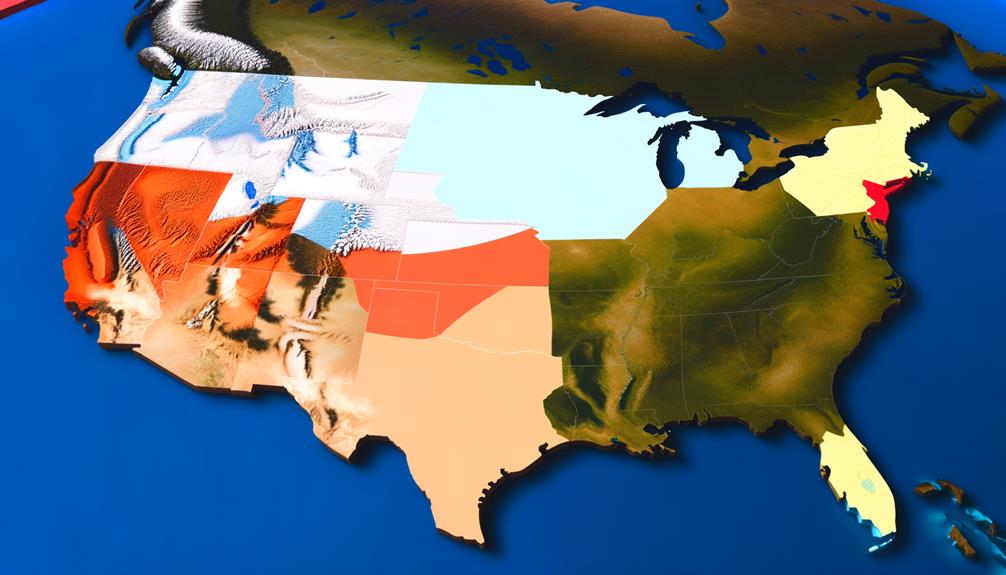
When I started looking into furnace installation costs, I was surprised by how much prices can swing based on where you live.
It turns out that an urban setting often demands a steeper price tag than rural areas, due to higher demand and increased labor costs.
Geographic Cost Differences
Maneuvering the diverse landscape of furnace installation costs can be quite the journey, as prices fluctuate considerably depending on where you live.
Imagine this: in the snowy embrace of the northern states, where winters are harsh and biting, demand for high-efficiency furnaces skyrockets. Here, skilled technicians are in high demand, and their expertise doesn’t come cheap.
Conversely, in the mild climates of the southern regions, where heating needs are less demanding, you might find the costs to be surprisingly gentle on your wallet.
I’ve noticed that in bustling metropolitan areas like New York or San Francisco, installation costs can swell. This is partly due to the higher cost of living, but also the sheer density of homes needing heating solutions at once. It’s a bit like maneuvering a crowded street during rush hour—everyone’s vying for the same resources.
On the other hand, if you’re nestled in the expansive Midwest, where space and resources are more abundant, you might find yourself pleasantly surprised by competitive pricing.
The key, I’ve found, is understanding your local market dynamics. When you do, you can better anticipate what to expect and plan your furnace installation journey with confidence.
Urban vs. Rural Pricing
One thing I’ve learned on this journey of understanding furnace installation costs is that the urban-rural divide can be quite stark.
Envision this: in the heart of the city, where skyscrapers touch the clouds, the demand for furnace installation is high, creating competitive pricing.
But venture into the countryside, where fields stretch as far as the eye can see, and you’ll find a different story. The price variations can often catch you off guard, and I’ve found three key reasons why:
- Labor Costs: In urban areas, there’s a denser population of skilled technicians, which means competition keeps prices down.
- Transportation Fees: In the city, parts and equipment are just around the corner. But in rural settings, additional transportation fees for materials can add up quickly, affecting the overall cost.
- Availability of Services: Urban areas typically offer a wider range of service providers, which can drive prices down through competition.
In contrast, rural areas may have limited options, often resulting in higher costs.
Navigating these nuances is essential for making informed decisions about furnace installations.
Permits and Inspection Fees
Steering through the costs of installing a new furnace often leads us to the essential topic of permits and inspection fees. Imagine this: you’re ready to upgrade, and the new furnace is just a call away. But wait, there’s a significant step that can’t be overlooked—securing the necessary permits and confirming all installations meet local safety codes through inspections.
These aren’t just bureaucratic hoops; they’re safeguards for your home and wallet.
When I first navigated this process, I realized the importance of understanding local regulations. Permits can vary dramatically depending on where you live. In some cities, you might pay as little as $50, while in others, it could rise to $300 or more. The variation reflects differing local requirements and the complexity of your installation.
It’s wise to contact your local municipality or a trusted contractor to get a precise estimate.
Inspections, on the other hand, serve as peace of mind. They confirm that your furnace is installed correctly, adhering to safety standards. I remember the inspector’s visit—his meticulous attention reassured me that everything was in order.
You might think of it as an extra step, but trust me, it’s an essential one.
In the end, permits and inspections aren’t just formalities. They protect your investment and guarantee your home’s safety. As you budget for your new furnace, remember to include these fees.
It’s not just about compliance; it’s about confidently stepping into a warmer, safer home.
Additional System Components
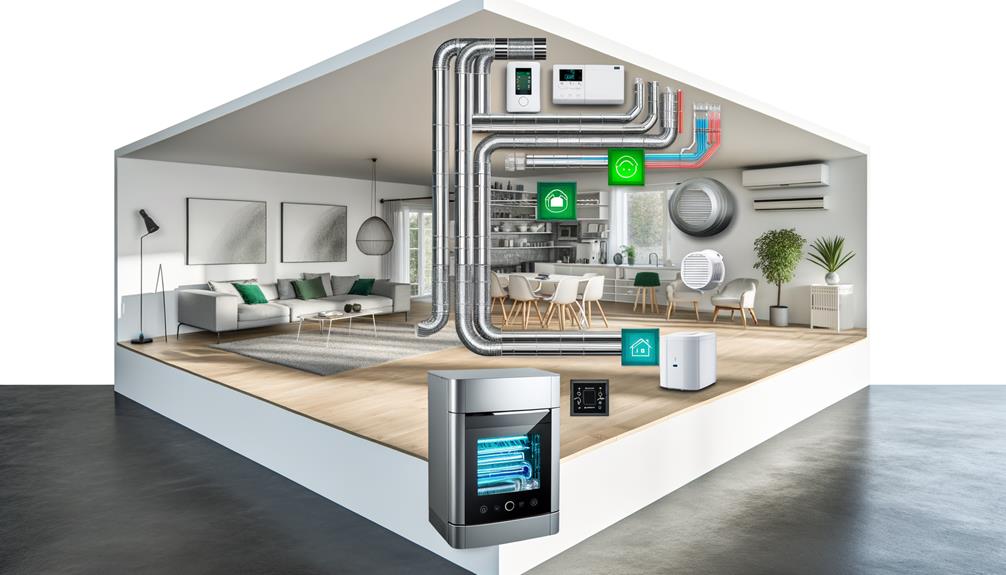
As you dive deeper into the world of furnace installations, you’ll soon discover the importance of additional system components that can elevate your heating experience.
Envision this: a cold winter night, your home wrapped in a cocoon of comfort, thanks to a well-thought-out heating system. It’s not just about a furnace; it’s about creating an environment where efficiency meets comfort.
Allow me to illustrate with some essential components that can transform your heating system:
- Thermostats: Not just any thermostat, but a smart one that learns your habits and adjusts the temperature accordingly. Imagine walking into a warm house after a long day, without lifting a finger. These small devices pack a punch, offering energy savings and unparalleled convenience.
- Humidifiers: Winter air can be dry and unforgiving. A whole-house humidifier can work wonders, adding moisture to the air and preventing the discomfort of dry skin and static electricity. It’s like turning your home into a cozy, welcoming oasis amidst the winter chill.
- Air Purifiers: With indoor air quality becoming an increasing concern, consider integrating an air purifier into your system. It’s a revitalizing breath—literally. These purifiers capture pollutants and allergens, ensuring every inhale is clean and invigorating.
Investing in these components isn’t just about upping your game; it’s about making your home a haven of warmth and health.
Each piece complements the furnace, creating a symphony of comfort that resonates through every corner of your home.
Cost of Removing Old Furnace
When it comes to upgrading your home’s heating system, the first step often involves removing the old furnace, a task that can be surprisingly complex and costly. I remember standing in my basement, gazing at the bulky, outdated furnace that had served its time. It was a formidable piece of equipment, and the thought of having it removed seemed overwhelming.
As I explored the process, I discovered that the cost of removal isn’t just about hauling away the old unit—it’s a delicate dance of preparation, safety, and expertise.
The expense of removing an old furnace can range anywhere from $500 to $1,500, depending primarily on the complexity of the removal and disposal. I found that if your old furnace is tucked into a tight corner or integrated with other systems like ductwork or gas lines, it can drive the costs higher.
The removal isn’t just physical labor; it requires technical skill to disconnect and dismantle without disrupting the rest of your home’s infrastructure.
Moreover, environmental regulations often necessitate careful disposal of the old unit, particularly if it contains hazardous materials. This means additional fees for safe disposal, which can vary by location.
In my case, I opted for a professional service that offered peace of mind. They guaranteed that the removal was conducted safely and in compliance with local regulations, leaving me free to focus on the exciting prospect of installing a new, efficient furnace.
The process, though costly, was a necessary step to enhance my home’s comfort and efficiency.
Financing and Payment Options
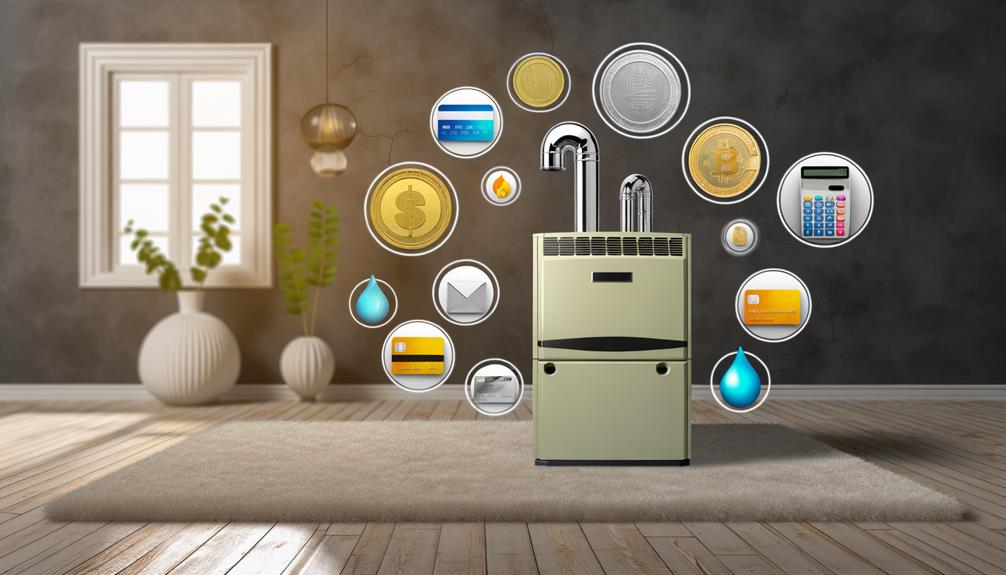
When I considered upgrading my furnace, I discovered an array of financing options that made it more affordable.
Flexible monthly plans and enticing zero-interest promotions caught my eye, offering a way to manage costs without breaking the bank.
However, I quickly learned the importance of understanding credit eligibility requirements to guarantee I could take advantage of these offers.
Flexible Monthly Plans
Envision this: your home is cozy and warm, thanks to a brand-new furnace, and you didn’t have to break the bank to make it happen. How is this possible? With flexible monthly plans, you can spread the cost of your furnace over time, making it a manageable part of your budget.
Imagine sipping your morning coffee, knowing that comfort doesn’t come with a hefty price tag.
Here’s how flexible monthly plans can work for you:
- Tailored Payments: You decide the monthly amount that fits your financial situation. This flexibility guarantees that you don’t overextend your budget, allowing you to focus on other priorities.
- Predictable Budgeting: With fixed monthly payments, there are no surprises. You’ll know exactly what to expect each month, which makes financial planning a breeze.
- Peace of Mind: Investing in a new furnace with manageable payments means you’re prepared for those chilly winter months without sacrificing your savings.
I’ve been in your shoes, weighing the options and figuring out how to make it all work.
With these plans, you can confidently invest in the comfort of your home while maintaining financial stability.
Isn’t it time to embrace warmth without the worry?
Zero-Interest Promotions
Envision this: you’re exploring options to upgrade your home’s heating system, and suddenly you stumble upon a deal that seems too good to pass up—zero-interest promotions.
It’s like finding a hidden treasure map, promising to lead you to a more efficient furnace without the heavy burden of immediate financial strain. Picture the possibility of spreading your payments across several months or even years, all while avoiding any additional interest. Sounds enticing, right?
I’ve been in your shoes, weighing the pros and cons of such deals. The allure of zero-interest financing lies in its simplicity—pay only the cost of the furnace and installation, with no extra charges creeping in unexpectedly.
It’s an opportunity to invest in your home’s future, financially savvy and manageable. I remember feeling empowered, knowing I could secure a top-quality furnace without draining my savings.
Of course, it’s essential to read the fine print. Zero-interest promotions often require timely payments to maintain their interest-free status, and missing a payment could lead to retroactive charges.
But with careful planning and commitment, this could be your golden ticket to a cozy, efficient home.
Credit Eligibility Requirements
As you weigh the appeal of zero-interest promotions, it’s important to contemplate another piece of the puzzle: the credit eligibility requirements.
Envision this: you’ve found the perfect furnace, the promise of warmth clear in your mind, but you still need to navigate the intricate maze of credit checks and financial stipulations.
When I first started on this journey, I discovered three key requirements that can greatly influence your eligibility:
- Credit Score: Most lenders look for a credit score of at least 650. A higher score opens doors to better terms but fear not if you’re on the cusp; options might still exist.
- Debt-to-Income Ratio: This measures how much of your income goes toward debts. Lenders typically prefer a ratio below 36%. It’s not just about numbers; it’s a reflection of financial responsibility.
- Employment History: Consistent employment can be a reassuring sign for lenders. Ideally, they like to see at least two years in the same role, highlighting stability and reliability.
Seasonal Pricing Trends
Winter’s chill or summer’s heat can greatly impact the cost of installing a new furnace, making timing an essential factor in your decision. I’ve learned that the rhythm of the seasons not only dictates the weather but also the ebb and flow of furnace pricing. Imagine a bustling marketplace, where demand dictates price, and you’ll begin to understand how the time of year can influence the cost of your new installation.
In the heart of winter, as snowflakes drift lazily from the sky and families huddle for warmth, the demand for furnaces peaks. Installers’ schedules fill up quickly, and prices inevitably climb. Picture a contractor’s phone ringing off the hook, a proof of the urgency of cold-stricken homeowners.
Wintertime can feel like a race against the elements, with costs reflecting the urgency.
Conversely, as spring softens the grip of winter, the demand begins to wane, and prices often follow suit. This is the season of reflection and planning, when the urgency wanes, allowing for more leisurely decision-making. It’s as if the world takes a collective deep breath, and so do the furnace prices.
Summer brings its own tale. While it might seem counterintuitive, the sweltering heat can lead to a surprising increase in furnace installations, as forward-thinking homeowners prepare for the next chill.
Yet, the true sweet spot often lies in the gentle lull of early fall. Installers, less burdened by emergency calls, can offer more competitive rates. Understanding these seasonal trends can empower you to make a more informed, cost-effective decision.
Tips for Cost Savings
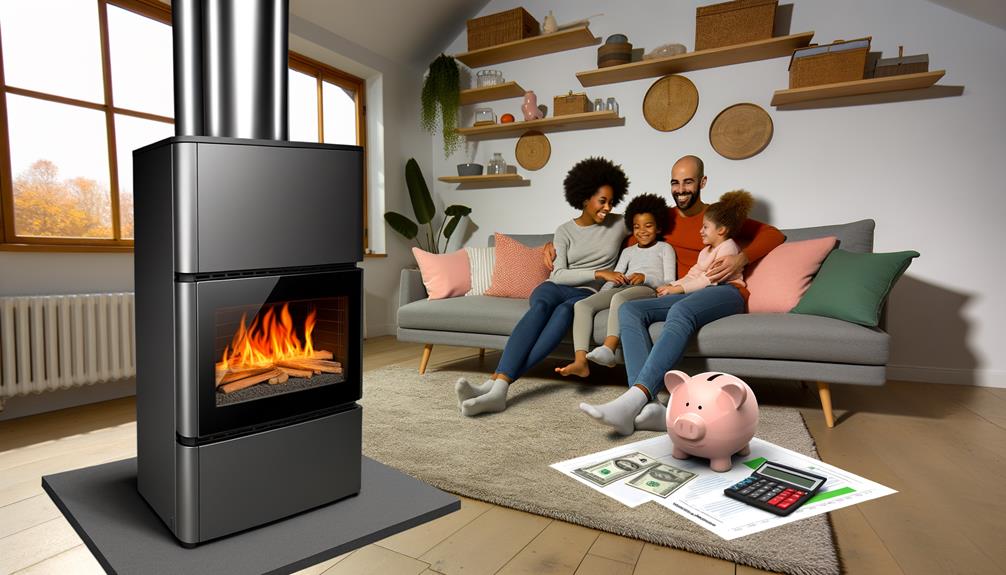
When I was replacing my furnace, I discovered that choosing efficient energy solutions wasn’t just about being eco-friendly; it also greatly cut my bills.
By allocating resources wisely, like balancing initial costs with long-term savings, I found the perfect fit for my budget.
Let me share some tips that helped me make the most of my investment.
Efficient Energy Solutions
Imagine opening your utility bill and seeing a pleasant surprise instead of a shocking number. That’s the magic of efficient energy solutions.
I remember the first time I optimized my home’s energy use; it felt like revealing a secret door to savings and comfort. Here are some tips for transforming your furnace into a model of efficiency.
1. Invest in a Programmable Thermostat: This small device can be a game-changer. It allows you to set temperatures for different times of the day, ensuring your furnace isn’t working overtime when no one’s home.
I found that by simply lowering the temperature a few degrees at night, my savings soared.
2. Seal and Insulate: Drafts are like thieves, silently robbing your home of warmth. I tackled this by sealing gaps around windows and doors and adding insulation in the attic.
The result? A cozier home and a noticeable dip in energy costs.
3. Regular Maintenance: Treat your furnace like a prized vehicle. Regular tune-ups keep it running efficiently.
I schedule an annual check-up, ensuring filters are clean and components are in top shape. This keeps my furnace humming smoothly all winter long.
These steps can turn your energy woes into wins.
Smart Resource Allocation
While optimizing energy efficiency can create a cozy home, smart resource allocation secures those comforts don’t break the bank. I remember standing in my basement, staring at the old, wheezing furnace, knowing it was time for an upgrade. The intimidating task of balancing comfort with cost savings loomed large. I knew there had to be a way to navigate this without draining my wallet.
First, I explored energy-efficient models that promised long-term savings, but I didn’t stop there. I contacted multiple contractors, comparing not just prices but also their reputations and service offerings. This diligence paid off; I found a reputable installer offering seasonal discounts.
Timing is everything, and scheduling the installation during the off-peak season saved me a good chunk of change. I also took advantage of government rebates for eco-friendly appliances, a small but significant incentive that cushioned the initial outlay.
Additionally, I made sure my home was well-insulated, reducing the furnace’s workload and extending its lifespan. Each step, meticulously planned, was like piecing together a puzzle, ultimately creating a warm, inviting, and cost-effective haven.
With these strategies, I turned a potential financial burden into a savvy investment.
Frequently Asked Questions
How Long Does It Take to Install a New Furnace?
When I installed my new furnace, the process took about a day. Watching skilled technicians transform my space, I marveled at their efficiency. They seamlessly replaced the old unit, ensuring warmth and comfort filled my home.
What Warranties Are Typically Offered With New Furnace Installations?
I know warranties can be confusing, but let me simplify it for you. Typically, new furnace installations come with a manufacturer’s warranty of 5-10 years and a contractor’s labor warranty of 1-2 years. It’s reassuring, right?
How Can I Determine the Right Size Furnace for My Home?
When I needed a new furnace, I measured my home’s square footage and consulted an HVAC professional. They calculated the BTU requirements, ensuring efficiency and comfort. Don’t guess; precise sizing saves energy and enhances your home’s coziness.
Are There Any Government Rebates for Installing Energy-Efficient Furnaces?
I discovered government rebates for energy-efficient furnaces, which eased my financial burden. I felt empowered learning about these incentives, designed to encourage eco-friendly choices. They’re worth exploring to enhance your home’s efficiency and contribute to a greener planet.
What Maintenance Is Required for a Newly Installed Furnace?
Imagine your furnace as the heart of your home: it needs regular check-ups to stay healthy. I recommend changing filters monthly, cleaning vents, and scheduling annual professional tune-ups to guarantee it runs efficiently and safely.
Conclusion
After traversing the maze of furnace installation costs, remember this: investing in a high-efficiency model might seem steep, but it can trim your energy bills by up to 30% annually. Imagine the warmth of a cozy home, backed by the smart choice of energy savings! Don’t forget, seasonal trends can offer surprising deals, and a little research could lead to significant savings. Your journey to a warmer home is a balancing act of cost, efficiency, and timing.
HVAC System Cost & HVAC Reviews
More Homeowner Guides
Categories
